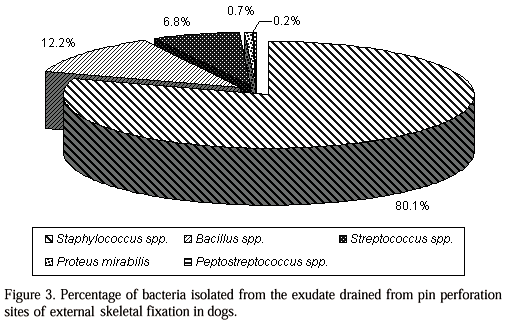Eleven dogs, of both sexes, average weight of 12kg, with ages ranging from two to five years were used with the objective of evaluating two treatments of skin wounds produced after percutaneous bone transfixation of the tibia. In six animals, cotton swabs embedded in 0.2% iodine-alcohol were used to clean the areas of pin perforations. In five dogs, a 0.9% sodium chloride solution, under approximate 30 psi pulse pressure, was used. In both cases, and treatments were carried out every three to four days, during four weeks. Clinical specimens were collected under anaerobic conditions, immediately before the treatments, and on days 3, 7, 14 and 28 after surgery. Samples were cultured in specific media in order to allow isolation of aerobic and anaerobic bacteria and yeast. Dogs treated with sodium chloride solution showed little purulent exudation, while dogs treated with iodine-alcohol presented dry skin wounds with minimum blood-serous to serous exudation. The microbiological evaluation revealed predominance of Staphylococcus spp, but no differences were observed between the two treatments. The results allowed to conclude that both methods are efficient for post-surgical treatments of bone percutaneous transfixation in dogs.
Dog; external skeletal fixation; post-surgical complication




